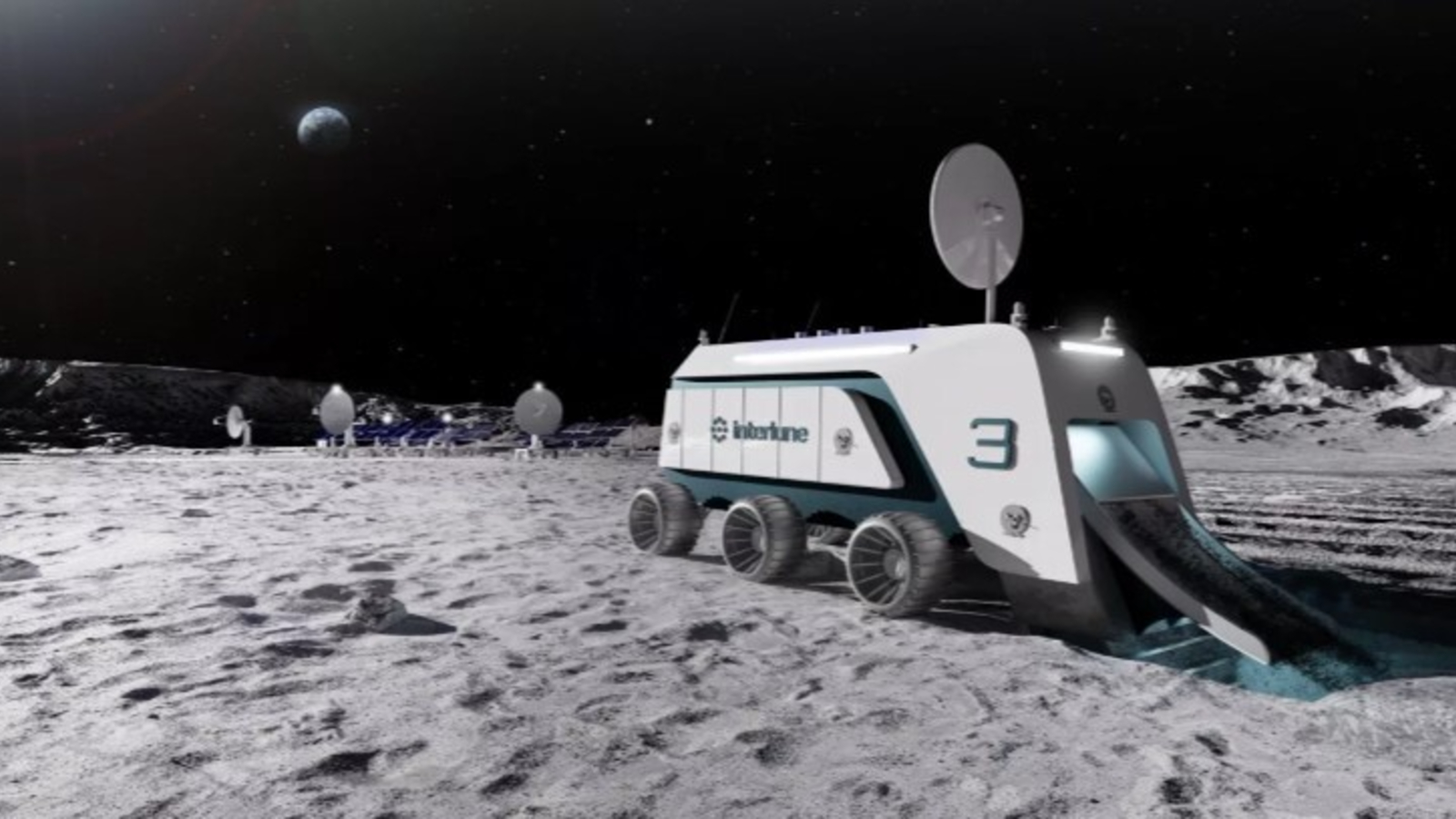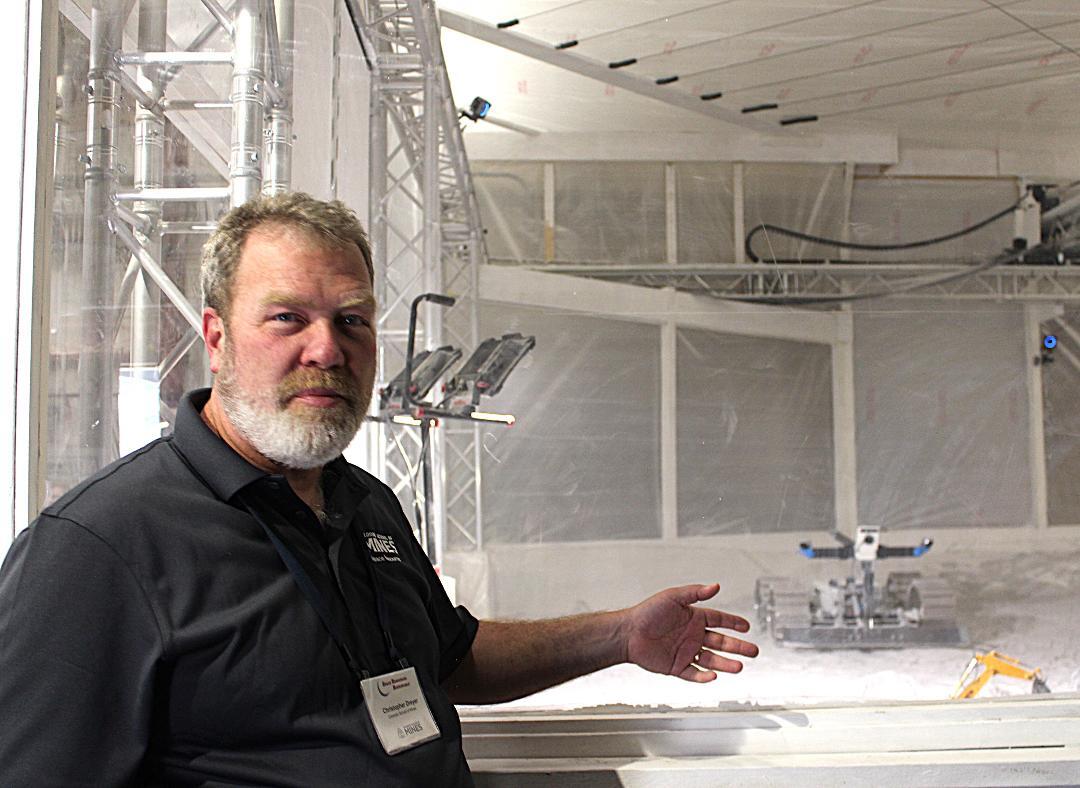New lunar surface simulator in Colorado puts moon machinery to the test

"There are lots of opportunities to use the testbed for lunar excavation testing, construction, mobility, sensing, dust mitigation and more."

GOLDEN, Colorado — The Colorado School of Mines has built a large simulated moonscape. The specialized facility is being used to test lunar rovers and to evaluate lunar landing and launch pads, excavation gear and other hardware ideas.
It's all about getting a lunar leg up on how to work effectively with robotic spacecraft on the moon.
"The Mines Lunar Surface Simulator is up and running. We are using it almost every day for one project or another," said Ian Jehn, an adjunct professor at the school and a structural engineer focused on safe and sound infrastructure for the moon.
Currently, specialists are running rover investigations for the Autonomous Site Preparation: Excavation, Compaction, and Testing project, or ASPECT for short. The work is underway as part of NASA's Lunar Surface Technology Research (LuSTR) program, Jehn told Space.com, to demonstrate automated lunar site preparation.
ASPECT is a fully autonomous rover, outfitted with equipment for regolith excavation, boulder moving and surface compaction.
Unique challenges
The challenges of building this unique facility were many, said Chris Dreyer, director of engineering at the Colorado School of Mines Center for Space Resources.
"We wanted to build a large facility with a high-quality geotechnical lunar regolith simulant, which presented logistics challenges to make a large amount of simulant at a reasonable cost," Dreyer said. Over 110 tons (100 metric tons) of lunar simulant fills the large testbed.
Breaking space news, the latest updates on rocket launches, skywatching events and more!
The structure itself needed to be dust-tight and waterproof. Within the Mines Lunar Surface Simulator, a gantry system was built to follow a rover's actions. Frankie Zhu, an assistant professor of mechanical engineering at the School of Mines, developed a rover motion capture system to model rover mobility based on observation.
Building the testbed was a complex task that took more than a year of planning and construction, according to Dreyer. "Having built this, I can understand why there are so few equivalent testbeds in the world," he said.
Open for innovation
Colorado-based company is building robotic infrastructure, including a rover named Eagle, to help open the moon to further exploration, innovation and commercial activity.
Also interested is Interlune, a Seattle-based startup that aims to be the first company to commercialize natural resources from space, starting with harvesting helium-3 from the moon. Then there's Outward Technologies, a space mechanisms and systems company advancing critical technologies for extracting resources in space.
And some companies are already using the simulated moonscape. For example, during a recent visit to the testbed, Neurospace GmbH of Berlin evaluated its modular rover platform, the HiveR.
Irene Selvanathan, CEO of Neurospace, said the group is identifying the minimum technology required to build a rover that's inexpensive, affordable and scalable. HiveR is modular, flexible, able to repair itself, and is transferable for use in applications on Earth.

"We're always looking for opportunities to support technology development coming from startups, established aerospace, and academia," Dreyer concluded. "There are lots of opportunities to use the testbed for lunar excavation testing, construction, mobility, sensing, dust mitigation and more."

Leonard David is an award-winning space journalist who has been reporting on space activities for more than 50 years. Currently writing as Space.com's Space Insider Columnist among his other projects, Leonard has authored numerous books on space exploration, Mars missions and more, with his latest being "Moon Rush: The New Space Race" published in 2019 by National Geographic. He also wrote "Mars: Our Future on the Red Planet" released in 2016 by National Geographic. Leonard has served as a correspondent for SpaceNews, Scientific American and Aerospace America for the AIAA. He has received many awards, including the first Ordway Award for Sustained Excellence in Spaceflight History in 2015 at the AAS Wernher von Braun Memorial Symposium. You can find out Leonard's latest project at his website and on Twitter.
You must confirm your public display name before commenting
Please logout and then login again, you will then be prompted to enter your display name.

